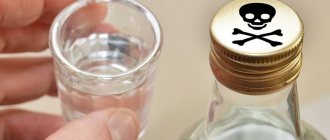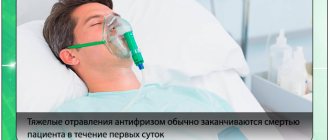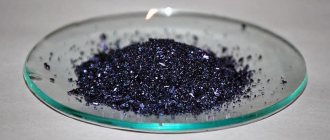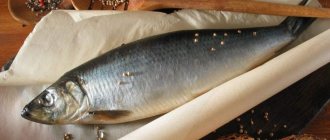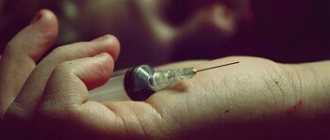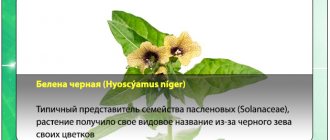It turns out that in our time you can still be poisoned by the poison of a corpse and have unpleasant consequences for the body. This toxin, derived from a decomposing body, is dangerous and open contact with the source must be avoided. And if symptoms of poisoning appear, immediately take measures to cleanse the body.
This type of poison is released from the decomposed corpses of animals and people. The formation of poison occurs under the influence of putrefactive organisms. There is a risk of infection for everyone who has close contact with the deceased - the pathologist, relatives, who, as a rule, have direct contact with the body of the deceased.
In ancient times, cadaveric poison was used as a deadly weapon; now it is less dangerous, but one should not forget about the possibility of poisoning.
History [edit | edit code]
Previously " cadaveric poison"
“called a hypothetical substance, the action of which was attributed to fatal diseases of persons dissecting corpses;
According to modern ideas, the cause of these diseases is infection with pathogenic microorganisms. Before the development of toxicology, the term “ ptomain
” was used to imply the overall impression of the unpleasant smell of carrion (caused, in particular, by certain amines - products of microbial decomposition of proteins) and the danger of poisoning - corpses could become infected, animals that ate such meat could be poisoned.
Ludwig Briger made a significant contribution to the study of ptomains at the end of the 19th century; his essay " Ueber Ptomaine
"(in three parts: "
Ueber Ptomaine
", Berlin, 1885; "
Weitere Untersuchungen über Ptomaine
", Berlin, 1885; "
Untersuchungen über Ptomaine
", Berlin, 1886), presents a set of teachings about the Ptomaines in the form in which it existed several decades with virtually no changes [1] [2] .
According to Brockhaus
(an outdated point of view that does not correspond to modern ideas):
Ptomains, nitrogenous products of the breakdown of animal tissues under the influence of various microorganisms. Most of them are very poisonous. These are the products of decomposition of rotten meat and corpses (the so-called corpse poisons, cadaverine). Many P. are the product of the activity of pathogenic microorganisms in infectious diseases (cholera, typhoid, etc.) [3].
- Home page
- Articles
- Ptomaine
Scientific value
A corpse used for scientific purposes is often called “cadaver” (Latin: Cadaver - “corpse”, “dead body”). The medical value of cadaver is high: the study of dead bodies has helped the development of medicine, biology and related sciences for many centuries. After death, almost any corpse, and especially a human one, has a certain value for study, and, if desired by its former owner or with the consent of relatives, can be sold or transferred free of charge for study. It is also practiced to send so-called “unclaimed” bodies for study: homeless people, prisoners, lonely people, unidentified corpses found, etc.
For example, Nikolai Ivanovich Pirogov in the middle of the 19th century developed a method for studying the relative positions of organs to improve the competence of operating surgeons, which was called topographic anatomy. The essence of the method was the study of frozen corpses, cut layer by layer in various anatomical planes. Pirogov published an atlas entitled “Topographic anatomy, illustrated by sections drawn through the frozen human body in three directions.” The images presented in his atlas predated the appearance of similar images obtained by modern computer tomography methods by more than a century, thanks to the study of cadavers.
Also, cadavers previously served as objects for conducting various studies of the effects on the human body [4]:
- cadavers were used to test the effects of the guillotine during the transition in France from the death penalty by hanging to the guillotine;
- studies of the effects of firearms were carried out on fragments of the human body in the late 19th and early 20th centuries;
- cadavers served as dummies in the first full-scale tests in the field of passive safety of cars in the 30s...40s of the 20th century, etc.
Currently, the study of corpses is sometimes complicated by legislation, religious norms, etc., especially if preliminary exhumation is necessary. In many cases, studies are conducted on dummies with built-in sensors or materials with properties equivalent to the human body (for example, ballistic gel when conducting impact studies of any type of weapon).
Ptomaine
. Once, a coffin with the body of a drowned man was delivered to my work by forensic experts, and it remained there. four days! I saw how the coffin was opened and how the people doing this got dirty in the excretions of the corpse, and then they grabbed the door handles, the washbasin tap. I and others also had to take up these subjects. I don’t know about the others, but for me now every stain on my clothes, on my hands is associated with that dead man, with the fear of infection with cadaveric poison.
Pathologist Olga SHUSTROVA .
The sight of a dead body is always a very difficult sight, especially in the last stages of decomposition. And even more so the sight of a drowned man. The fact is that in water the processes of tissue breakdown proceed many times faster, and the body of a drowned person is always swollen, green in color, and a strong odor emanates from it. All this taken together can have a very serious impact on the psyche of an unprepared person. And such a long stay of the body outside a special place, in front of the public, is unacceptable from any point of view.
Nevertheless, it makes sense to take a closer look at what we commonly call “cadaveric poison” and how dangerous it is for people who, due to necessity, have to deal with the dead. Corpse poison is two chemical compounds - cadaverine and putrescine, which are formed during the decomposition of corpse tissue. Essentially, it is the end product of decomposition. These compounds are quite toxic and appear, as a rule, on the third or fourth day after death, when the process of decay has already begun. However, it is almost impossible for a healthy person to become infected with these substances. Even if the “cadaveric poison” gets into the blood, it will almost immediately be inactivated in the human liver and then eliminated from the body.
The more real danger of infection from contact with a dead body comes from viruses and bacteria. The fact is that no person can exist without intestinal flora, which helps us break down and digest food. This includes E. coli, various lactic bacteria, and many other microorganisms. After death, when tissue decomposition begins, all these rods and bacteria receive a huge nutrient medium for reproduction. And here what the person died from is of great importance. If a patient died from heart failure, stroke, anemia, or as a result of injury, then all processes of tissue decomposition proceed slowly. Especially if the deceased is in a cold room.
Exhumation of the corpse
Main article: Exhumation
An investigative action consisting of removing a corpse from a burial site. Exhumation is carried out for inspection, including repeated, of a buried corpse or to establish the identity of the deceased by presenting the corpse for identification or expert identification, as well as for conducting an examination in order to clarify circumstances, the establishment of which requires knowledge in the field of forensic medicine, forensic biology, and criminology. etc.
Composition of cadaveric poison
The soft tissues of the human and animal body contain a huge amount of protein compounds and amino acids. After killing, the processes of active reproduction and cell division are replaced by decomposition, and rotting begins. As a result, completely new compounds are formed, one of the signs of which is a specific cadaverous odor.
In modern toxicological studies, all decomposition products are combined under the general concept of “ptomaine”. This is a large group of amine substances that are formed by the interaction of breakdown products of protein molecules, acids, and oxygen. Depending on the ambient temperature and other external factors, they begin to be produced in tissues within 3–4 days.
In fact, a whole group of chemical and organic substances is released in the composition of cadaveric poison. They have different properties, but when combined they become a toxic formula:
- Cadaverine. Externally, the compound is a colorless liquid resembling water. It is formed during the decomposition of proteins and lysine under the influence of decarboxidase enzymes. Gives soft tissues an unbearable smell of a corpse, which is difficult to confuse.
- Putrescine. The biogenic substance is formed in the intestines and gives the smell notes of ammonia. Its molecules combine with cadaverine, creating a disgusting “deadly aroma” formula. In minimal quantities it occurs with heavy consumption of fish and meat, and the rotting of fibers in the large intestine. When exposed to fresh air, it becomes practically safe for humans.
- Neirin. The most dangerous substance for living beings. It accumulates in dead tissues in a small volume a few days after the onset of decay, resembles a thick syrup, and easily dissolves in water.
- Spermidine. The component is the basis for all proteins, but is dangerous only when directly infected through the blood, and has low toxicity. It determines what the corpse of an animal or a person smells like.
Is ptomaine dangerous?
It is believed that cadaveric poison is very dangerous. There was even a myth that, if it gets into the bloodstream with a small puncture of a finger, it can cause death in a person. Now “cadaveric poison” is an outdated concept. Substances released as a result of the decomposition of the body are called ptomaines. These are biogenic amines that arise during the decomposition of protein tissue. In a corpse they appear 3-4 days after the start of decomposition . And the speed of their development depends on the temperature and humidity conditions of the environment. During this process, a specific smell appears.
Why is cadaveric poison dangerous? It contains toxic substances that are dangerous to the human body. Let's take a closer look at the composition of cadaveric poison:
- Cadaverine. It is a colorless liquid that is soluble in water and alcohol. Has an unpleasant odor. Formed during the decomposition of living organisms. In addition, the substance is found in beer and some plants. Cadaverine in large quantities is very dangerous for a living organism.
- Putrescine is a toxin that appears in the large intestine when fish and meat decompose.
- Neuron has a syrup-like consistency. Appears in the process of decay of nerve tissue. Neuron is the most dangerous of all components of cadaveric poison, although it is formed in very small quantities in a decomposing organism.
This makes it clear why cadaveric poison has a negative effect on humans. Moreover, the strength of this effect can be different, which depends on the body’s sensitivity to biogenic amines. Pathologists note that when the skin is wounded during an autopsy, the wound becomes extremely painful and an intense inflammatory process appears . Fever may also occur.
In addition to cadaveric poison, similar substances are found in fly agarics, dope, and belladonna, which are also very poisonous.
Features of the components of cadaveric poison
Recent studies have shown that cadaveric venom also contains other subtle substances responsible for the formation of a powerful odor. Diamines cause anaerobic infections in dead tissues, which intensify putrefactive processes. These volatile substances, entering through the nose, affect the human brain center and can provoke the production of the hormones adrenaline and serotonin. This explains the appearance of anxiety in people who smell an unpleasant amber.
The least studied from a toxicological point of view is neurin. It is formed from the neuronal cells of the body, so its quantity is limited. Its production in dying tissue begins just 2–3 hours after death and increases in humid or warm conditions. When the air temperature drops below 0°, the process stops completely. It is considered one of the most dangerous poisons.
Is there cadaveric poison in plants? Ptomain in the form of cadaverine is part of toxic compounds that can be found in cells:
- hop cone extract,
- fly agarics,
- belladonna,
- edible boletus.
During chemical analysis, cadaverine can be found even in high-quality beer, but its amount does not cause discomfort or symptoms in humans. At this dosage, the toxin is instantly neutralized by liver enzymes and eliminated naturally.
Causes of cadaveric poisoning
In historical literature, poisoning with cadaveric poison often caused the death of a person, but in reality such situations were mostly the author’s invention. A large number of deaths in the Middle Ages were associated with the spread of viral diseases: bubonic plague, smallpox, influenza. Upon contact with deceased family members, viruses got onto wounds or mucous membranes, and infection began. This is how epidemics arose, from which entire cities died out.
There is a lot of research into whether it is possible to be poisoned by cadaveric poison. For fatal intoxication, it is necessary to simultaneously inject a huge dose of a substance into the blood so that the liver cannot cope with their processing and neutralization. If ptomains come into contact with the skin without cuts or scratches, the contact will pass without consequences. In rare cases, irritation or an allergic reaction may occur.
The problem rarely arises in medical practice, but the cadaver stick can be harmful if it gets into open wounds of hangnails near the nails. This is possible when cleaning up animal remains, exhuming a dead person, working with corpses in a morgue or a student laboratory. Infection as a consequence of carelessness is observed in inexperienced pathologists at the beginning of their careers.
An equally dangerous and more likely variant of injury is inhalation of decomposition products. An analysis of its composition explains why the cadaverous odor is dangerous: organic toxins in volatile form easily penetrate the lungs, settle on the pleura, and are absorbed into the blood. After staying in an apartment where a decomposing body was located for a long time, a person may experience all the signs of acute intoxication.
Content
- 1 Cadaveric phenomena 1.1 Early cadaveric phenomena 1.1.1 Rigor mortis
- 1.1.2 Cadaveric spots
- 1.1.3 Post-mortem cooling
- 1.1.4 Cadaveric desiccation
- 1.1.5 Autolysis
Symptoms of poisoning
In practice, poisoning with cadaveric poison is practically never encountered in judicial practice. But when bacteria and toxins enter wounds, a protective reaction of the body may occur, which manifests itself in the following symptoms:
- skin redness,
- swelling of the area around the cut,
- low-grade fever up to 37–37.5°,
- nausea,
- muscle weakness.
When a small dose is ingested, the body of a healthy person copes well with neutralizing biogenic toxins. When passing through the liver, they are retained by the cells of the organ, disinfected and become absolutely safe for internal organs. If ptomains enter through the esophagus, gastric juices and bile enter into a chemical reaction. Toxic substances are broken down into organic compounds, which are excreted in the urine by the kidneys. The latter makes cadaveric poison not dangerous when dissolved in water. If you drink a little liquid from the pond where the dead fish was, the body will cope with the problem with the help of its own digestive enzymes.
The situation becomes more complicated if you inhale gases for several minutes when cadaveric poison appears. The released toxins easily enter the lungs, so the symptoms of poisoning are more pronounced:
- vomiting and nausea for at least 2–3 days,
- lymph nodes become inflamed,
- drowsiness occurs
- I am worried about constant dizziness.
Toxicologists explain why cadaveric poison is dangerous when it gets into wounds: staphylococcal or intestinal bacteria can penetrate with it, and soft tissue inflammation begins, developing into sepsis. Symptoms of complications are as follows:
profuse sweating,
- loose stools,
- diarrhea with bloody streaks,
- the lymph nodes in the neck become inflamed,
- limb spasms,
- severe drooling
When the lymph nodes suppurate, cadaveric warts can form on the body. Small nodes under the skin hurt when touched, itch and itch. With comprehensive detoxification, they disappear without additional treatment.
Consequences of contact with ptomaines
If cadaveric material gets into an open wound, it can cause inflammation and sepsis . After all, after death, a cadaveric bacillus and a number of other harmful bacteria are formed in the biological material. The greatest danger among them is staphylococcus. But in this case, there are signs not of poisoning, but of an inflammatory process.
Neuron has the greatest toxicity, so it is possible to be poisoned by it. And sick people with weakened immune systems are susceptible to this. In case of intoxication, the patient experiences the following symptoms:
- muscle spasm, which results in cramps;
- lymph nodes enlarge, especially the cervical ones. Inflammation of the lymph nodes spreads to the subscapular cavity. Here the lymph glands suppurate. In some cases, metastatic ulcers appear;
- sweating increases, which has an unpleasant odor;
- the intestinal microflora is disrupted, which leads to diarrhea. Profuse vomiting begins, possibly with blood particles. As a result, the victim’s body becomes dehydrated;
- There is increased production of saliva, and sputum is released during coughing. The patient may also develop pneumonia.
- Bad breath smells, and this symptom does not disappear even after brushing your teeth.
The consequences of cadaveric odor poisoning can be very serious. In severe cases, the recovery process takes a very long time. And the inflammation of the lymph nodes subsides slowly. Even after healing, as a result of increased stress on the arms, the axillary lymph nodes may become swollen again . And this can cause serious suppuration, which leads to damage to the chest.
In addition to acute poisoning, persons who dissect corpses may develop cadaveric warts on the body. These are small tubercles that are characterized by increased pain. True, they are completely safe for health and do not cause complications. Over time, they disappear on their own.
Scientists believe that dangerous cadaveric poison is released when the tissues of the human body rot. That is why people are buried no later than 3 days after death.
First aid for cadaveric poisoning
Having analyzed the composition and the dangers of cadaveric poison, it is easy to understand that when minimal doses of toxins enter the body, special help is not required. If a person has inhaled decay products, it is necessary to provide first aid, which consists of accelerating the elimination of toxic compounds:
If human cadaveric poison gets into an open wound and inflammation begins, you should consult a doctor. The specialist will prescribe antibiotics to treat the bacterial infection and clean the suppuration. For several days, bandages soaked in local antiseptics are applied to the cut: Chlorhexidine, Miramistin, hydrogen peroxide. Similar therapy is also necessary for poisoning with plant poisons.
Cadaveric poison in food
Despite many stories and prejudices, it is necessary to understand what cadaveric poison is from a chemical point of view. This is a series of organic compounds that, when processed in a certain way, are beneficial to humans. They are used for the manufacture of medicines and the processing of animal skins.
In everyday life, every housewife who has purchased stale meat at least once encounters the appearance of cadaveric poison. When slaughtering livestock, decomposition processes begin within a few hours, reaching a peak after 72 hours. Therefore, at all stages of transportation and cooking, it is important to observe the temperature regime and freeze the carcass for long-term storage. When consuming such products, food intoxication occurs.
Embalming
Preservation of a dead body by surgical treatment and the introduction of special chemical compounds into it that slow down the process of its decomposition. Embalming is performed mainly so that the body can be transported over a long distance and the funeral ceremony can be carried out without undue haste. In the United States, embalming is a common hygienic procedure performed by funeral services. Embalming is also (was) important in rituals associated with burial and religion. This was practiced in many cultures, the most famous examples for the layman are the ancient Egyptian traditions of mummification, as well as the traditions of creating burial mounds of the peoples of Europe.
Prevention
Under normal conditions, a person can consume minimal doses of cadaveric toxins when eating food. Therefore, doctors do not advise thoughtlessly trying exotic dishes on tourist trips. If mucus or a characteristic musty odor appears on meat or fish, the product must be thrown away. Unscrupulous traders try to disguise the putrid amber in spices or vinegar, so you should buy meat products only in trusted stores and demand sanitary documents for the goods.
